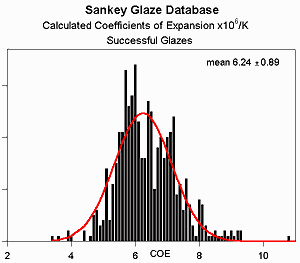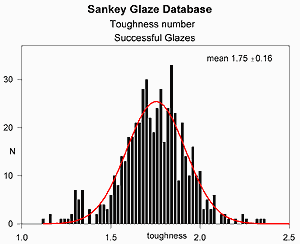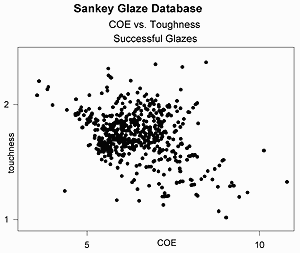|
Studies of copper leaching from glazes by Hesselberth&Roy
suggest that a stable cone 6 glaze should have a silica Seger ratio
above 3.0 and an alumina ratio of 0.25-0.45. H&R exclude boron
and all materials they consider to be colorants from the Seger ratios on which
they based their recommendations. The values at right were obtained using their
definition (i.e. including solely SiO2,
K2O, Na2O,
Li2O, MgO, SrO, ZnO, BaO, CaO,
Al2O3), for cone 6 gloss
or semigloss glazes. Clearly, most glazes in the database that are considered to
be successful by testers have much less silica than a glaze should have by their
criteria. And, a significant number have alumina outside their limits as well.
Potters seem to be saying that the criteria of Hesselberth&Roy are stricter
than necessary. It's true that H&R used 5% copper carbonate, a larger than
normal amount of one of the most leachable colorants. Lower amounts of colorant
leach much less. However, for centuries potters used large quantities of lead
in glazes, even cadmium and uranium; all are now known to be dangerous
and are legally prohibited in many countries. So, perhaps H&R are
the voice of the future.
| |
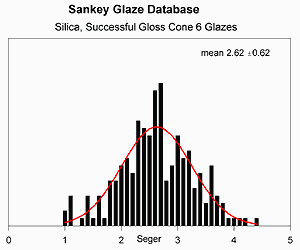
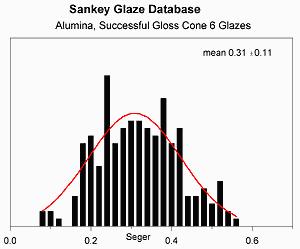
|
